Southwest Michigan field crops update – June 10, 2021
Rain showers this week were beneficial for those fortunate enough to be underneath one, but more dry weather in the forecast is unwelcome news for moving crops through early vegetative stages.

Weather
As predicted, temperatures this past week were reminiscent of mid-August rather than early June. We were 7 to 10 degrees warmer than normal in southwest and south central Michigan. The upper atmosphere trough feature and a tropical air mass from the Gulf of Mexico—along with high dew points and particularly unpleasant humidity levels—will be moving out of the Upper Midwest over the next couple of days and temperatures will be moderating to normal and possibly even below-normal levels starting next week.
Dry conditions persist, and the current version of the U.S. Drought Monitor shows D2 Drought conditions covering 30% of Michigan, a considerable increase from the last version. It can get boring looking at the same graphics each week to hear the same bad news, so Michigan State University Extension agricultural climatologist Jeff Andresen updated another graph depicting the rankings of just how dry things are compared with the past 129 years. This year is in the top 10 for driest years since 1893. The situation does not look like it will improve in the coming week with daily high temperatures predicted to be in the 80s. Although nighttime lows will drop back down to upper 50s to lower 60s, daily moderate winds and the warm daytime temperatures will result in a weekly forecasted reference evapotranspiration (FRET) rate of near 1.7 inches which equates to daily demands of roughly 0.25 inch with up to 0.27 inch next Monday.
There have definitely been winners and losers with the scattered showers that fell across the state this past week. There is another chance of pop-up showers this Thursday and into Friday, and there is a slight chance of small amounts of rain with a frontal system moving through later Saturday, but after that there is very little chance of rain for the next week. Most of us can expect less than 0.25 inch in the next 7 days although some areas may see as much as 0.50 inch. The 6-10 day and 8-14 day outlooks show some question as to whether temperatures will be normal or possibly below normal, but both predict below-normal precipitation for mid-June.
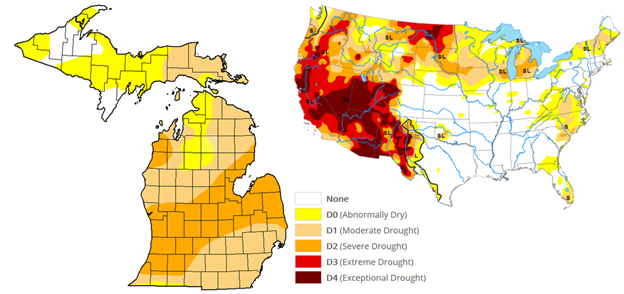
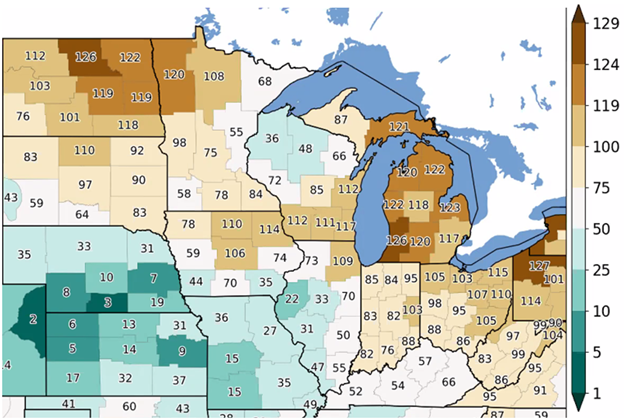
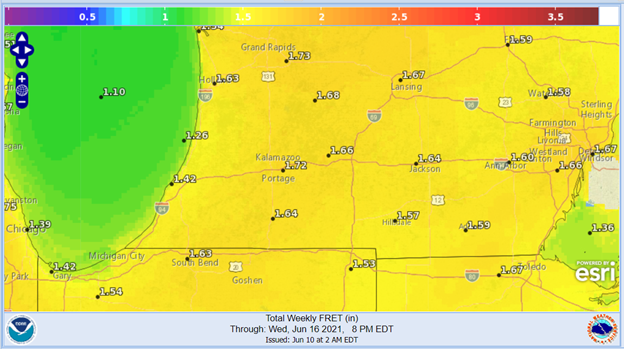

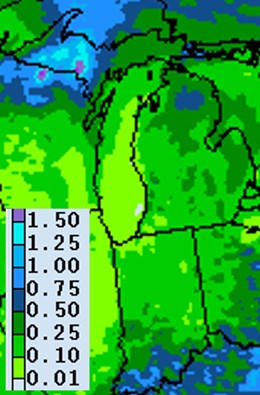

Crops and pests
Wheat has finished flowering and has progressed to beginning kernel fill (Feekes 10.5.4). The threat of head blight is mostly passed, and no new foliar diseases have been seen thus far. Now the crop just needs favorable weather during grain fill. Non-irrigated wheat has been hit by the dry conditions reasonably hard. Lower canopy leaves have fired in some cases, although the upper leaves are the most important for filling grain. MSU Extension wheat specialist Dennis Pennington says the hot temperatures will impact grain fill to some extent, but with a return to cooler temperatures starting next week we should be in good shape. Now we just need adequate moisture as the crop will require 1.8-1.9 inches water this coming week. MSU and Purdue Extension irrigation educator Lyndon Kelley says most producers he has talked with who irrigate applied an inch and hoped for rain this week, but the soils at depth are very dry which means higher irrigation amounts are needed to get this crop through the dry weather to harvest.


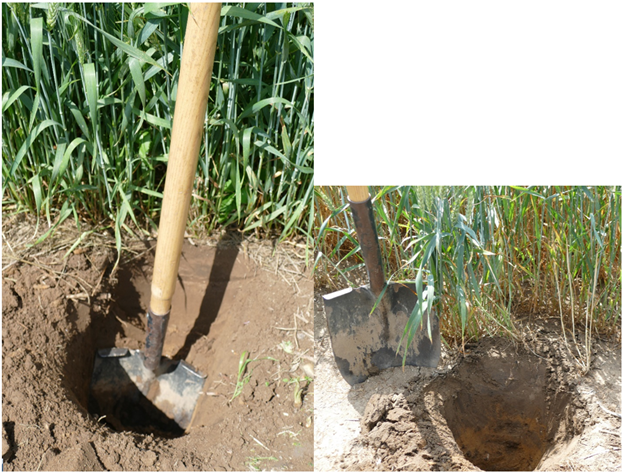
Alfalfa still waiting first cutting is currently in the full-flower stage. MSU Extension forage educator Phil Kaatz says alfalfa that is harvested late can be fed to any kind of livestock, but it is recommended to feed lower quality forage to growing heifers and beef cows that don’t require as high a quality feed as dairy cows or horses. Weevil feeding is not prevalent in the smaller fields scouted recently. Harvest conditions for first cutting have been very good with all the dry conditions and sunshine. Although the yields are down, harvest quality should have been very good. The timely showers that many have received should help the re-growth to get started. Keep an eye out for potato leafhoppers, which can impact second cutting alfalfa with lower numbers—threshold is 20 per 100 sweeps on 3-inch alfalfa.
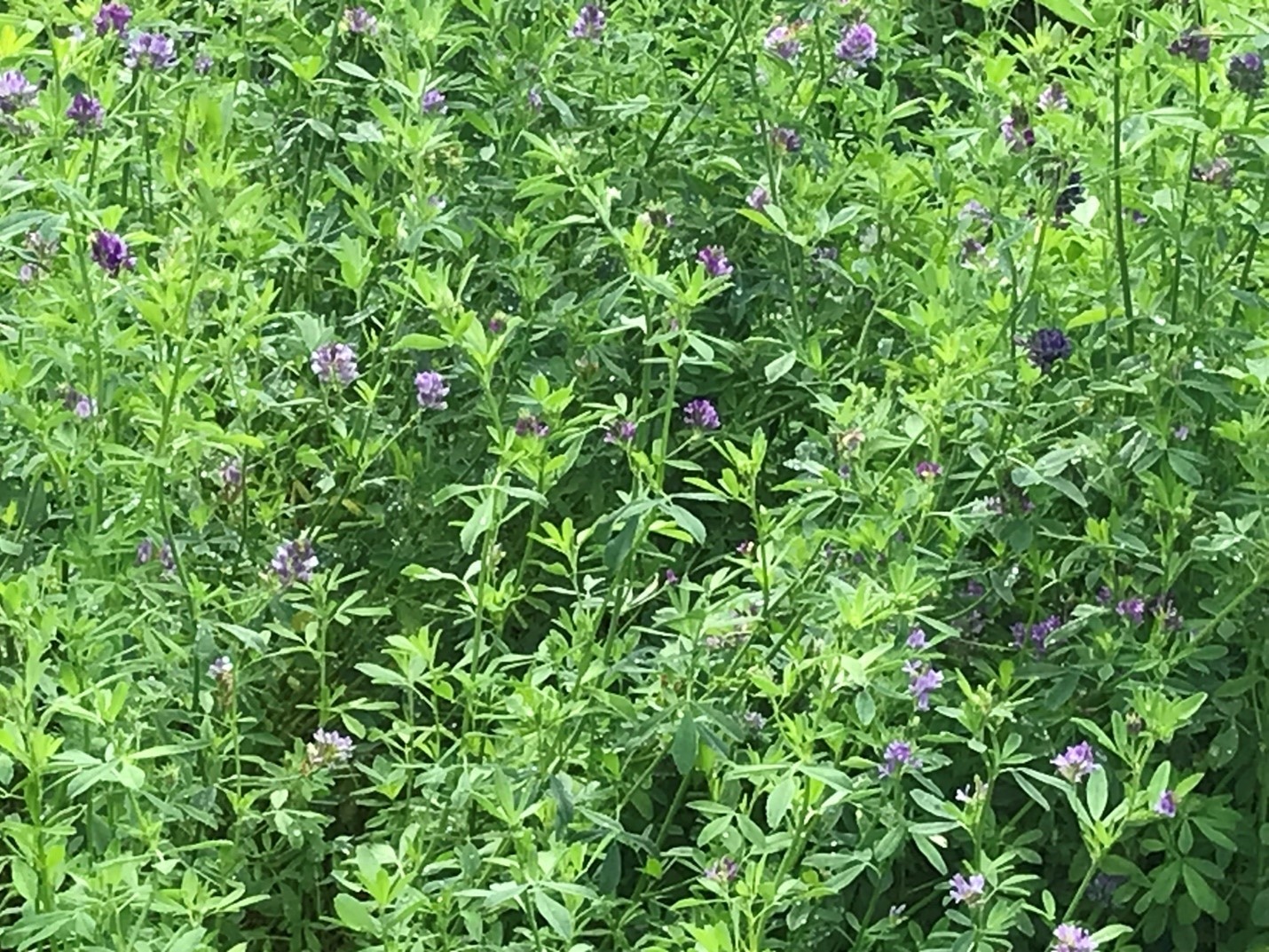
Corn planting has just about finished up in Michigan with 98 percent planted and 92 percent emerged according to the June 7 USDA Crop Progress report. The stress from too little water in most of the state and too much water in parts of the central region caused ratings to be somewhat low for this time of year with only 56 percent of the crop rated as good or excellent and an additional 39 percent rated as fair.
Early planted fields are V6 while later planted fields are all over the board as folks waited for some rainfall to help bring the plants up. No-till fields did conserve moisture which helped. Corn at V6 will use 0.67 inch this coming week and corn at V8 will use 0.96 inch. Plants at this stage are determining row number in the ears. Drought stress will begin to have more of a potential impact on yields as we progress through the vegetative growth stages and will peak at around pollination. Watch for weed growth and be prepared to clean up pre-emergence weed escapes. Side-dress time is often when we notice uneven plant growth due to Asiatic garden beetle white grub feeding (as we are out in the fields and see much more area). Make note of areas that have unexplained poor or uneven growth. MSU Extension field crops entomologist Chris DiFonzo says white grub feeding is coming to and end as larvae are getting ready to pupate, so we shouldn’t have issues with root feeding moving forward this season.
Soybean was 97% planted and 87% emerged, and crop condition ratings were essentially identical to those for corn. Early planted fields look reasonably good and later planted fields benefited from the recent rainfall. With dry conditions expected to continue, be prepared to spray postemergence programs early enough to keep weeds from becoming competitive. Insects have not been an issue thus far. One thing to keep in mind in dry seasons is that we can have increases in both soybean aphids and spider mites. Both of these pests benefit from dusty conditions that tend to keep pathogenic fungi from effectively controlling their populations. DiFonzo said spider mites don’t generally start to flare up until around July 4.
True armyworm and black cutworm moth traps this week once again produced goose eggs and traps were retired for the season. DiFonzo affirms that we are past the point of concern for larval damage from these pests.
DiFonzo also caught her first European corn borer moths on campus this past week. According to her Fast Fonz Facts update, “Using this first catch as a biofix—a point to start degree day (DD) accumulation—egg hatch is estimated in 212 GDDs or roughly June 18-23 in central Michigan. Second and third stage larvae, which feed in the midrib and shothole the whorl, are predicted roughly from June 23 - July 7. Mid-June thru early July is thus the time frame for scouting non-Bt corn for first generation corn borer damage in mid-Michigan, since first to third instars are the target for an insecticide spray. A quick threshold: 50% of plants have whorl feeding & live larvae are still present in the whorl. Older larvae tunnel into the plant and are not controlled by sprays.”



 Print
Print Email
Email



